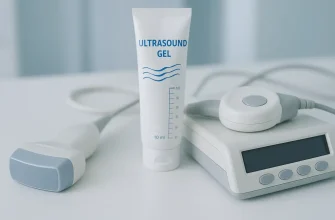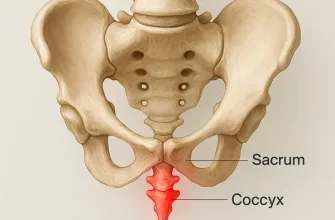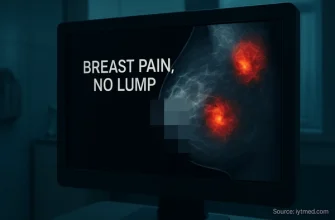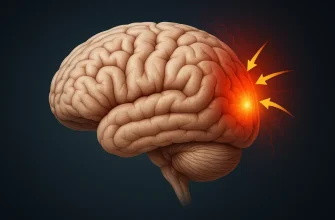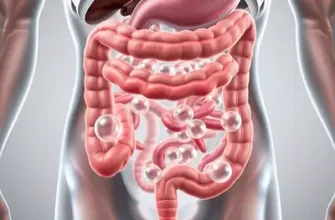Chronic pain is defined as pain lasting longer than 3 months, and it affects nearly 51.6 million American adults according to the CDC (2021). Unlike acute pain, which is a direct response to injury or illness, chronic pain persists beyond normal healing and often becomes a condition of its own. Common types include back pain, arthritis, nerve pain, and fibromyalgia.
Most Common Types of Chronic Pain in Adults (2023)
| Pain Type | Affected Adults (%) |
|---|---|
| Lower Back Pain | 39% |
| Neck Pain | 15% |
| Arthritis | 17% |
| Headaches/Migraines | 12% |
| Neuropathic Pain | 9% |
| Fibromyalgia | 8% |
This chart shows the prevalence of various types of chronic pain among adults in 2023. Lower back pain remains the most widespread, affecting nearly 4 in 10 adults, followed by arthritis and neck pain. Other chronic conditions like migraines, neuropathic pain, and fibromyalgia impact smaller yet significant portions of the population.
Why Is Chronic Pain So Hard to Manage?
Because chronic pain doesn’t always have a clear cause or visible symptoms, it can be mentally and physically exhausting. It often impacts sleep, mood, mobility, and relationships. Many patients describe the frustration of being told, “Your tests look normal,” while they still experience real, debilitating pain.
Common Causes and Conditions
- Arthritis (Osteoarthritis and Rheumatoid Arthritis) – These degenerative and autoimmune joint conditions are some of the most common causes of chronic pain. Osteoarthritis involves the gradual breakdown of cartilage, while rheumatoid arthritis is an inflammatory condition that affects the lining of the joints. Both types can result in swelling, stiffness, and decreased mobility.
- Neuropathic Pain (e.g., diabetic neuropathy, postherpetic neuralgia) – Caused by nerve damage or dysfunction, this type of pain is often described as burning, shooting, or electric-like. For example, diabetic neuropathy can cause numbness and pain in the feet, while postherpetic neuralgia follows a shingles outbreak and may persist for months.
- Fibromyalgia – A complex, chronic disorder characterized by widespread musculoskeletal pain, fatigue, and cognitive disturbances often referred to as “fibro fog.” The exact cause is unknown, but researchers believe it’s related to abnormal pain perception in the brain and nervous system. It disproportionately affects women and can significantly impair daily functioning.
- Chronic Back and Neck Pain – These are leading causes of disability and can stem from various conditions including herniated discs, spinal stenosis, or muscular strain. Chronic pain in these areas often worsens with certain movements and may radiate to the limbs, affecting posture, sleep, and productivity.
- Complex Regional Pain Syndrome (CRPS) – A rare but severe condition that typically develops after an injury or surgery. CRPS is marked by intense, burning pain, swelling, changes in skin color or temperature, and hypersensitivity. It most commonly affects an arm or leg and can be difficult to treat without early intervention.
Diagnostic Methods: What to Expect
Getting an accurate diagnosis is the first major step. Here are modern diagnostic options, how they work, and what they cost on average:
| Method | Description | Accuracy (1–10) | Average Cost (USD) |
|---|---|---|---|
| MRI | Detailed imaging of soft tissues | 9/10 | $1,000–$5,000 |
| CT Scan | Cross-sectional X-rays | 8/10 | $500–$3,000 |
| Nerve Conduction Study | Measures nerve signal strength | 7/10 | $300–$1,500 |
| Electromyography (EMG) | Tests muscle response to nerve signals | 8/10 | $200–$1,000 |
| Blood Panels | Detects inflammation or autoimmune issues | 6/10 | $100–$800 |
Modern Treatment Options That Go Beyond “Just Deal With It”
There’s a big difference between masking pain and actually managing it. Here are innovative treatments making real waves, each with a breakdown of the treatment process, how it works, its effectiveness, and accessibility in the U.S.

Spinal Cord Stimulators
What it is: A surgically implanted device that sends low-level electrical signals to the spinal cord to block pain messages before they reach the brain.
How it works: After a successful trial period using a temporary external device, a permanent system is implanted near the spine. It includes a small pulse generator and electrodes.
Best for: Complex Regional Pain Syndrome (CRPS), failed back surgery syndrome, and chronic leg or arm pain.
Effectiveness: 7.5/10 – Most patients report at least 50% pain relief.
Accessibility: Widely available through pain specialists. Out-of-pocket cost ranges from $30,000–$50,000.
Example: A 42-year-old man with CRPS in Arizona regained the ability to walk short distances unaided within weeks after implantation.
Topical Analgesics (e.g., Lidocaine patches, Voltaren Gel)
What it is: Medications applied directly to the skin to numb localized pain or reduce inflammation.
How it works: Lidocaine works by blocking nerve signals, while NSAID-based gels reduce inflammation in joints and soft tissue.
Best for: Arthritis, neuropathic pain, localized injuries.
Effectiveness: 6.5/10 – Best when combined with other therapies.
Accessibility: Available over-the-counter or by prescription. Low cost: $10–$60 per month.
Example: A woman in Pennsylvania managing knee osteoarthritis uses Voltaren gel before walks to minimize stiffness.
Prescription Medications
What it is: Includes anticonvulsants (Gabapentin), antidepressants (Duloxetine), and emerging treatments like low-dose naltrexone (LDN).

How it works: These medications target pain from nerve damage or inflammation by affecting neurotransmitters involved in pain processing.
Best for: Fibromyalgia, diabetic neuropathy, nerve pain.
Effectiveness: 6–8/10 – Varies by condition and patient.
Accessibility: Requires prescription. Monthly cost ranges from $20–$150 depending on brand and dosage.
Most Commonly Prescribed Medications for Chronic Pain (U.S., 2023)
The chart illustrates the most commonly prescribed medications for chronic pain in the United States in 2023. Gabapentin leads by a wide margin with 69 million prescriptions, indicating its broad use in nerve-related pain. Naproxen and Tramadol follow as commonly used non-opioid and opioid options, respectively.
Example: A 57-year-old woman in Ohio reported improved energy and reduced fibromyalgia flares on low-dose naltrexone combined with aquatic therapy.
Trigger Point Injections
What it is: Direct injections of corticosteroids or local anesthetics into muscle knots (trigger points).
How it works: Relieves tension in muscle tissue that can cause referred pain to other areas of the body.
Best for: Myofascial pain syndrome, chronic neck or back pain.
Effectiveness: 7/10 – Often used in conjunction with physical therapy.
Accessibility: Performed by pain specialists. Cost per session: $150–$500.
Example: A retired construction worker in Illinois receives monthly injections to manage upper back spasms and maintain range of motion.
TENS Units (Transcutaneous Electrical Nerve Stimulation)
What it is: Wearable electrotherapy devices that deliver mild electrical pulses through the skin.
How it works: Stimulates nerves in the affected area to block pain signals and promote endorphin release.
Best for: Lower back pain, arthritis, musculoskeletal pain.
Effectiveness: 6.5/10 – More effective when used regularly and combined with exercise.
Accessibility: OTC or by prescription. Cost: $30–$200. Easy to use at home.
Example: A 35-year-old teacher in Vermont uses a TENS unit during work breaks to manage chronic cervical spine pain and prevent migraine escalation.
Each of these treatments offers a distinct pathway to relief and is most effective when matched to the individual’s diagnosis, pain pattern, and lifestyle. Combining two or more approaches is often the key to sustainable pain control.
Real Stories from the U.S.
A 42-year-old man in Arizona with CRPS spent years cycling through ineffective pain medications and physical therapy before he was referred to a pain management clinic. After a thorough evaluation, his team implemented a plan involving lumbar sympathetic nerve blocks followed by implantation of a spinal cord stimulator. Within weeks of the implant, he could walk short distances without crutches—something he hadn’t done in over a year. His sleep improved, and he described the change as “getting part of my life back.”
A 57-year-old woman in Ohio with fibromyalgia faced daily exhaustion and muscle tenderness that made even getting out of bed a challenge. After struggling with medication side effects, she was introduced to low-dose naltrexone and began aquatic physical therapy sessions three times a week. The warm water reduced the impact on her joints while keeping her body moving. Three months in, she reported improved energy, fewer flare-ups, and even picked up gardening again—something she hadn’t dared in years.
A 35-year-old teacher in Vermont with chronic migraine and cervical spine pain found a new path to relief using a mix of botulinum toxin injections and a wearable neuromodulation device approved by the FDA. After a year of monthly treatments and daily use of the device, she saw a 60% reduction in migraine days. The breakthrough allowed her to return to full-time teaching and drastically reduced her reliance on painkillers.
A retired postal worker in Texas living with diabetic neuropathy found relief by switching from traditional pain meds to a customized regimen of duloxetine, foot-focused physical therapy, and daily use of compression socks. He reported his foot pain reduced from an 8 to a 3 on the pain scale, and he could finally enjoy his morning walks again—something he hadn’t done comfortably in over five years.
Patient Satisfaction with Pain Management Approaches (2024 Survey)
| Approach | Satisfaction (out of 10) |
|---|---|
| Physical Therapy | 8.2 |
| Opioids | 5.9 |
| CBD Products | 7.3 |
| Acupuncture | 6.5 |
| Cognitive Behavioral Therapy | 8.0 |
This chart presents patient satisfaction ratings for different pain management approaches based on a 2024 survey. Physical therapy and cognitive behavioral therapy received the highest scores, indicating strong approval among patients. Opioids scored significantly lower, reflecting ongoing concerns about effectiveness and side effects.
Daily Life Hacks That Make a Real Difference
- Use mobility aids unapologetically (think: ergonomic chairs, canes with style). For example, a 60-year-old man in Florida with degenerative disc disease shared how switching to a rollator walker with a built-in seat helped him attend his grandson’s soccer games without worrying about sudden pain flares. These aids are tools for independence, not signs of defeat.
- Plan your day around energy peaks to conserve strength. Many chronic pain sufferers report their pain is lowest mid-morning. Schedule critical tasks, like grocery shopping or walking the dog, during that window. Apps like Spoonie Day can help chart energy and pain levels over time.
- Batch tasks to avoid unnecessary movement. Instead of making five trips up the stairs or to the kitchen, group similar tasks together. One woman in Oregon with fibromyalgia sets a timer to do a single 20-minute round of housework instead of spreading it across the day, which reduces her fatigue and inflammation.
- Keep a pain journal to identify patterns and triggers. Document when, where, and how the pain occurs, along with food, activity, and weather details. One 38-year-old man with neuropathic pain in Chicago learned that high-humidity days worsened his symptoms. His physician used the data to adjust medication timing and recommend indoor activity changes. Journaling isn’t just therapeutic—it informs real treatment decisions.
Mental Health and Chronic Pain: They’re Deeply Connected
Chronic pain often goes hand-in-hand with depression and anxiety. This connection isn’t just emotional—it’s neurological. Pain and mood share overlapping pathways in the brain, meaning chronic discomfort can directly influence mental health, and vice versa.
Cognitive Behavioral Therapy (CBT) is one of the most effective tools, helping patients change thought patterns that amplify pain. Working with a licensed pain psychologist can offer structured coping strategies, from stress-response training to behavior modification.
Support groups—especially those tailored to specific conditions like fibromyalgia or CRPS—offer a sense of community, reduce isolation, and help patients learn from others navigating similar challenges. Additionally, some patients benefit from behavioral activation therapy, which encourages engagement in meaningful activities to counter the cycle of inactivity and despair.
Quality sleep, consistent physical activity within tolerance, and balanced nutrition also contribute to improved mental health outcomes for chronic pain sufferers, reinforcing the importance of a holistic but scientifically grounded approach.
Editorial Advice
Living with chronic pain doesn’t mean life is over—it means life needs to be reimagined. Embrace what works, whether it’s high-tech gear or a really good heating pad. Build a care team you trust. Prioritize your energy like it’s gold. Most importantly, speak up. Your pain is real, and there are people and tools out there that can help. Keep advocating for yourself—every single day.
Reyus Mammadli, healthcare advisor, recommends integrating technology-driven tools like TENS units and mobile pain tracking apps (e.g., Curable or Pathways) for data-backed management. “Patients who track their pain consistently tend to make better long-term choices,” he notes.
References
- Centers for Disease Control and Prevention (CDC). Chronic Pain Prevalence — United States, 2021.
- National Institute of Neurological Disorders and Stroke (NINDS). Chronic Pain Information Page.
- Mayo Clinic. Chronic pain: Symptoms and causes.
- Cleveland Clinic. Spinal Cord Stimulator: How It Works, Risks & Recovery.
- American College of Rheumatology. Fibromyalgia.
- U.S. Food and Drug Administration (FDA). Device Approvals and Neuromodulation Technologies.
- Journal of Pain Research. Efficacy of Low-Dose Naltrexone in Fibromyalgia and Neuropathic Pain.
- American Academy of Pain Medicine (AAPM). Pain Management Therapies Overview.
- National Institute of Mental Health (NIMH). Chronic Pain and Mental Health.
Discover practical strategies, tools, and expert advice for living with chronic pain while improving daily comfort and control.

